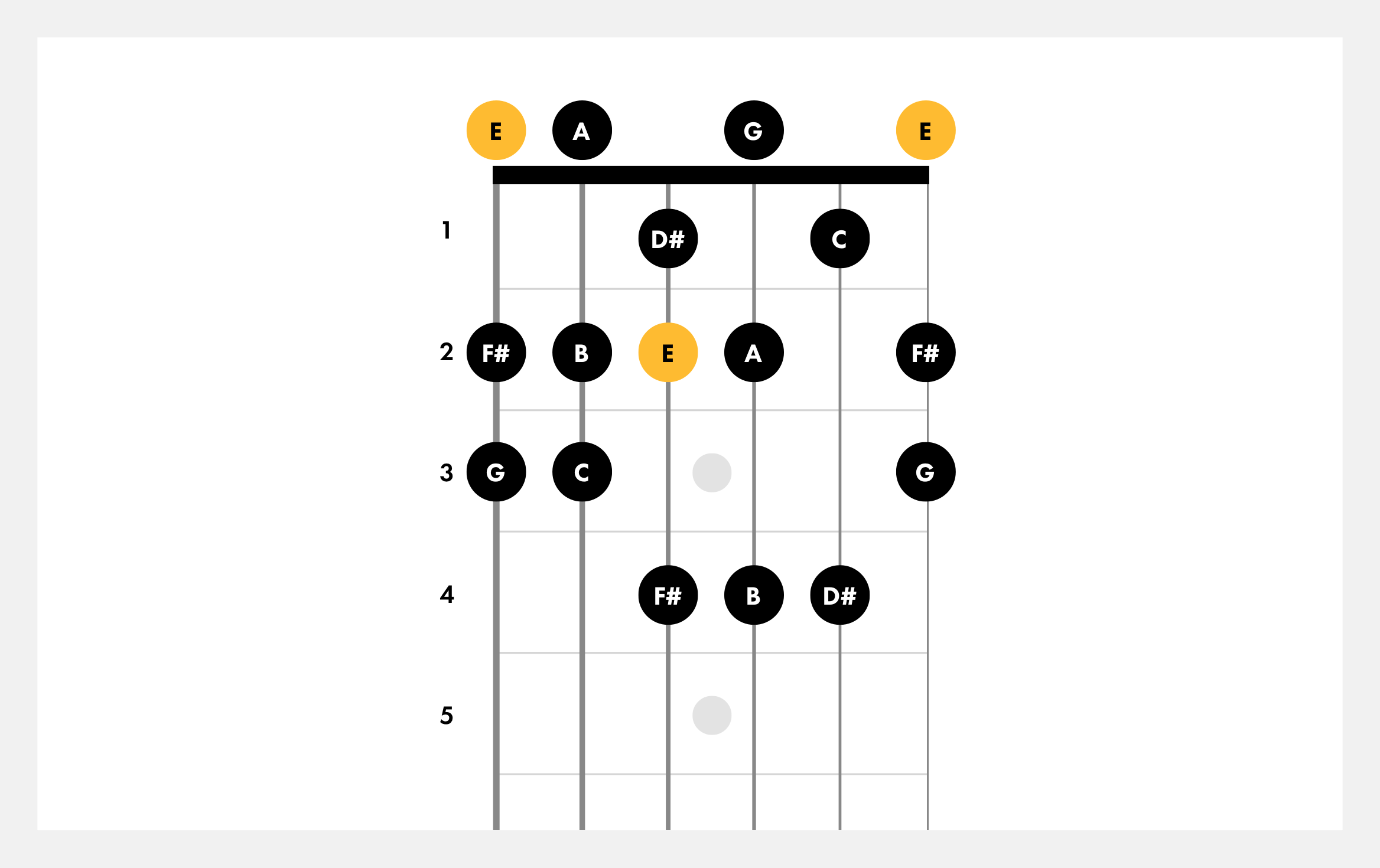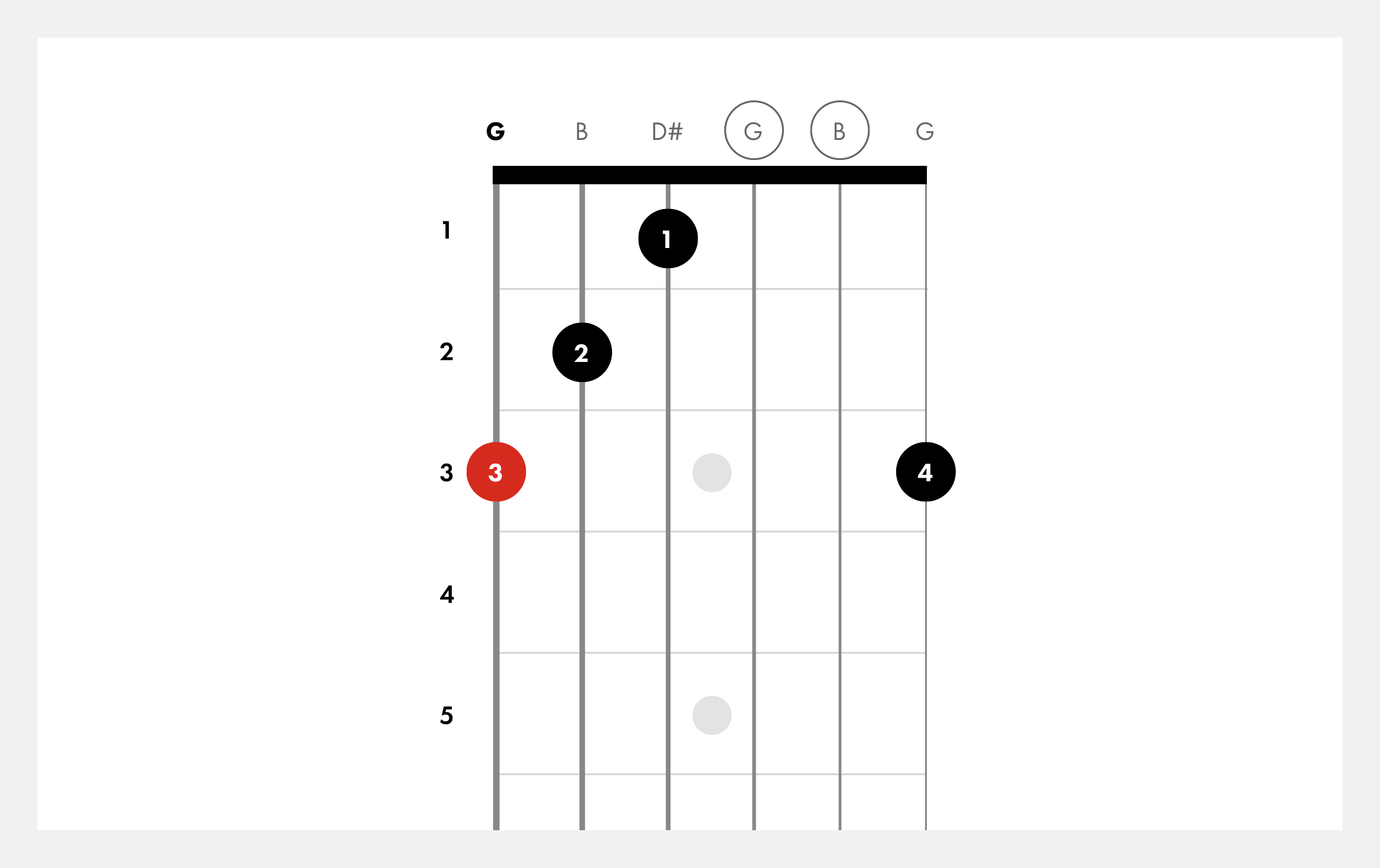
Sections
What is the Harmonic Minor Scale on Guitar
The harmonic minor scale’s distinct sound makes it a favorite among players specializing in styles ranging from neo-classical and jazz to metal and surf guitar. Sometimes called the Mohammedan scale because of its Middle-Eastern sound, the harmonic minor scale is an excellent scale to learn if you are interested in adding new sounds to your improvisation tool kit.
In the “Harmonic Minor: The Most Haunting Scale Ever” episode of Fender Play LIVE, host Eugene Edwards sits down with guitar expert (and PhD!) Dylan Caliguiri to talk in depth about the harmonic minor scale including how to play it and use it within famous songs like The Rolling Stones “Paint It Black” & The Offsprings “Self-esteem.” In the clip below, Dylan explains what the harmonic minor scale is and how to build on it.
If you’re already familiar with playing natural minor scales, you’ll notice that the harmonic minor scale shares all but one note with the natural minor scale. The raised seventh gives the harmonic minor scale its unique flavor.
In this lesson, we’ll study the harmonic minor scale, using the E harmonic minor scale -- one of the most commonly used harmonic scales -- as an example. We’ll learn how to play the E harmonic minor scale in two positions, and practice chords that accompany this scale. Finally, we’ll learn a movable version of the harmonic minor scale, and work on some exercises that will help you master this scale on the guitar. Let’s get started!
The E Harmonic Minor Scale
There are seven notes in the E harmonic minor scale:
E
F#
G
A
B
C
D#
E
In any key, the harmonic minor scale uses the following intervals: Whole step, half step, whole step, whole step, half step, whole and a half step, half step. The whole-and-a-half step between the C and the D# in the E harmonic minor scale creates an augmented second between the sixth and seventh notes of this scale.
Don’t miss out!
Be the first to know about new products, featured content, exclusive offers and giveaways.
E Harmonic Minor Scale Positions
You can play the E harmonic minor scale in many positions on the neck of your guitar. For this lesson, we’ll focus on two positions and the correct finger placement to play these scales properly.
To play the E harmonic minor scale, we’ll learn how to play using charts. These diagrams represent the neck of your guitar. In the diagrams below, each dot shows you which note you’ll play on a specific fret and string. If you see a dot with a note above the string, play the string in an open position. The yellow dots indicate the root note of the scale -- in this case, the root note is E.
Playing the E Harmonic Minor Scale on the E String
One way to play the E harmonic minor scale is on the low or high E string of your guitar. To play the scale in this way, you’ll need to shift your hand several times as you move up the neck. Practicing this scale will help you build the coordination you need to play solos and improvisations that travel up and down the fretboard.
Start by playing the E string open. Next, use your index finger to play the 2nd fret and your middle finger to play the 3rd. Shift your hand so your index finger can play the 5th fret and your ring finger can play the 7th. Shift again so your index finger can play the 8th fret and your pinkie can play the 11th. Then, slide your pinkie up one fret to hit the note on the 12th fret.

Playing the E Harmonic Minor Scale in Open Position
Another way to play the E harmonic minor scale is in the open position. To play the scale in this position, use your index finger to play notes on the 1st fret, your middle finger to play notes on the 2nd, your ring finger to play notes on the 3rd, and your pinkie to play notes on the 4th fret.

E Harmonic Minor Scale Tabs
Now that you’ve seen guitar scale diagrams showing how to play the E harmonic minor scale in two positions, let’s look at tabs showing how to play this scale.
Playing the E Harmonic Minor Scale on the E String
Follow the tab below to play the E harmonic minor scale on the high E string. Remember to shift your hand position up when to reach the 5th, 8th, and 12th frets.

Playing the E Harmonic Minor Scale in Open Position
Follow this tab to play the E harmonic minor scale in open position on the low E string. Keep your hand in the same position throughout. Use your index finger on the 1st fret, your middle finger on the 2nd, and so on.

E Harmonic Minor Scale Chords
There are many chords that sound great paired with the E harmonic minor scale. You can use these chords as a jumping off point to explore the many possibilities for matching this distinctive scale to a chord progression. There are seven notes in the E harmonic minor scale, so we’ll look at seven chords that correspond to each step in the scale.
E Minor
The E minor chord consists of the root note E, the minor third G, and the perfect fifth B. Learn how to play the E minor chord here.
F# Diminished
The F# diminished chord consists of the root note F#, the minor third A, and the flat fifth C. Here’s one way to play the F# diminished chord.

G Augmented
The G augmented chord consists of the root note G, the major third B, and the augmented fifth D#. Here’s one of several ways you can play the G augmented chord:

A Minor
The A minor chord uses the root note A, the minor third C, and the perfect fifth E. Learn how to play the A minor chord here.
In this Fender Play LIVE clip, watch Dylan Caligiuri play The Offspring’s “Self Esteem” and explain how they helped bring the different modes of the harmonic minor to the public:
Signup for Fender Play to access the full song lesson for The Offspring’s “Self Esteem” on guitar.
B Major
To play the B major chord on your guitar, you’ll need to know how to play barre chords. The B major chord is composed of the root note B, the major third D, and the perfect fifth F#. Learn how to play the B major chord here.
C Major
The C major chord consists of the root note C, the major third E, and the perfect fifth G. Learn how to play the C major chord here.
D# Diminished
The D# diminished chord is made up of the root note D#, the minor third F#, and the flat fifth A. Learn how to play a version of the D# diminished chord below.

The Movable Harmonic Minor Scale
Setting the E harmonic minor scale aside for a moment, let’s take a look at a moveable harmonic minor scale pattern. Because scales and chords are based on intervals, many guitar scales and chords are based on moveable patterns. Learning one of these moveable scale patterns gives you the power to play this scale in any key, anywhere on your fretboard.
If we shift up a few frets from the E harmonic minor we just learned, we can play the F# harmonic minor. This will feel slightly different because you are no longer using open strings. Play the guitar scale diagram below starting with your index finger on the 2nd fret, F#, of your low E string. On the E, A, and D strings, you’ll use your index finger on the 2nd fret, your middle finger on the 3rd, your ring finger on the 4th, and your pinkie on the 5th fret.
Once you reach the G string, shift your hand position back one fret so you can play the 1st fret with your index finger, the 2nd with your middle finger, the 3rd with your ring finger, and the 4th with your pinkie. On the high E string, to reach the 6th fret, you’ll need to slide your pinky up one fret after playing the note on the 5th fret.

Next, try playing this same scale pattern but starting with your index finger on the 3rd fret, G, instead. Now you’re playing the G harmonic minor scale. Don’t forget to shift your hand back a fret when you reach the G string so you can play notes on the 2nd fret with your index finger. Here’s a diagram of that same pattern we used for F# harmonic minor without specific note names. Instead, this chart shows which fingers to use on each respective fret.

If you go up one more fret and start this scale with your index finger on the 4th fret, you’ll be playing the G# harmonic minor scale. The starting note for this scale is its root note, so you now have the power to start this scale at any note on the low E string of your guitar.
Harmonic Minor Scale Exercises
The best way to practice playing the harmonic minor scale is to keep playing it over and over. Start by playing the E harmonic minor scale in ascending and descending order up and down on the low E string of your guitar. Next, practice playing the same scale on the high E string, and notice how the same notes sound in a higher register. You might try engaging your picking hand more in this exercise by adding in tremolo picking for a bit of a surf effect.
In this Fender Play LIVE clip, Dylan and Eugene discuss why the harmonic minor scale is critical to the The Rolling Stones’ “Paint It Black.”
Sign up for Fender Play to practice “Paint It Black” on guitar in the Fender Play app here.
Next, practice playing the moveable scale in different positions on the neck of your guitar. Start on the 2nd fret of your low E string, F#, and play through the scale in ascending and descending order. Next, move your hand position up one fret to start on the 3rd fret, G. Continue playing the scale in ascending and descending order until you get to the 14th fret, which is F# again.
Practicing the harmonic minor scale in this way will help you train your ear and build dexterity in your fretting and picking hands.


